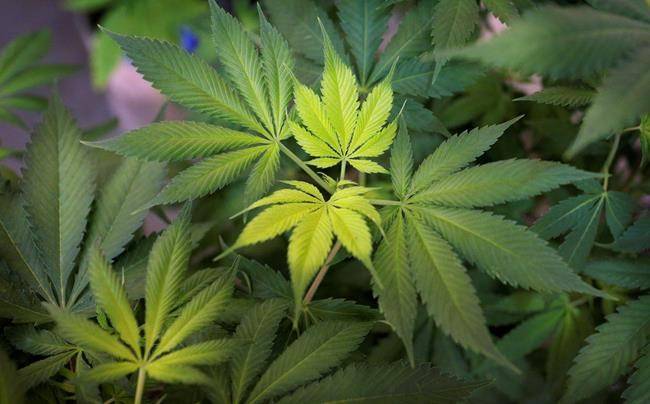You are here
Home 🌿 Recreational Marijuana News 🌿 Five Myths About Marijuana Legalization Debunked by Colorado's Experience 🌿Five Myths About Marijuana Legalization Debunked by Colorado's Experience

Here are five myths about marijuana legalization that Colorado officials and businesses say have been debunked in the state, where recreational pot was first legalized in 2012:
1. It's a tax windfall.
Marijuana sales surpassed US$1.3 billion in Colorado in 2016, but that's only a fraction of the state's $333 billion GDP, said Ashley Kilroy, Denver's executive director of excise and licences, which oversees marijuana policy.
In 2016, the state collected $199 million in tax and fee revenue, of which $40 million was earmarked for school construction projects and $5.7 million was designated generally for public schools. Colorado's overall budget is $26.8 billion this year.
The city of Denver also collects its own special 3.5 per cent tax on marijuana. But marijuana only accounts for 2.5 per cent of the city's general fund revenue and all of it currently goes towards regulation and enforcement of legal cannabis.
"It's nice to have but there have been a lot of costs associated with regulating it," said Kilroy.
2. More teenagers — and adults, for that matter — will start using pot.
Colorado officials thought there would be an increase in use as a result of legalization, said Dr. Larry Wolk, chief medical officer at the Department of Public Health and Environment. But there has been no increase to date among either youth or adults, he said.
"What it looks like is folks who may have been using illicitly before are using legally now and teens or youth that were using illicitly before, it's still the same rate of illicit use," he said.
The legal age for the consumption of marijuana is 21.
Wolk said Colorado is still working on getting teen use down through education campaigns. Using focus groups, the government has learned that it's not an effective message to tell kids pot is bad for their developing brain.
"What's more effective with kids is to point out how this could interfere with what's next — using marijuana may impact your ability to get a job, may impact your ability to drive a car, to graduate from high school."
3. Driving stoned is safer than driving drunk.
Wolk said he hears this dangerous misconception all the time.
"People try to trap us into this relative scale, 'Well, marijuana is safer than alcohol.' It's not really a competition between marijuana and alcohol. Impairment is impairment," he said. "If you're going to get high, don't drive, period."
Fifty-five per cent of marijuana users in Colorado believe it's safe to drive under the influence of cannabis, says a study by the state's Department of Transportation.
The number of fatalities involving a driver who had active THC — the mind-altering ingredient in cannabis — in their system was 44 in 2015, up from 31 in 2014. More than 17 per cent of all impaired-driving arrests by the Colorado State Patrol in 2016 involved marijuana.
However, the Denver Police Department reported only 73 of 2,532 impaired-driving arrests involved marijuana in 2015, or 2.8 per cent.
4. You have to be a weed enthusiast to get a job in the industry.
Colorado's legal cannabis industry created more than 18,000 new full-time jobs and generated $2.4 billion in economic activity in 2015, says an analysis by economic consulting firm Marijuana Policy Group.
Industry members say those jobs include not only the obvious growers, trimmers and retail workers, but lawyers, human resources directors, compliance consultants, public relations professionals, graphic designers and many more.
Josh Ginsberg, CEO of Native Roots, a top cultivation and dispensary chain, said the company employs nearly 700 people. When it comes to filling positions externally, sometimes well-qualified corporate professionals are hesitant to enter the marijuana industry, he said.
"They're a little scared to step into this industry because they feel it might change their future," he said. "I think that's a perception that people have and that's why it's difficult for us to find external people. It's much easier to build our family and educate from within."
5. Marijuana-related crime will go up.
Marijuana-related crimes include any crime reported to the Denver Police Department that has a clear connection to marijuana. These do not include illegally possessing, selling or growing pot.
In Denver, marijuana related-crime has represented a smaller percentage of overall crime since pot was legalized — from 0.58 per cent in 2012 to 0.42 per cent in 2015. There were 192 crimes against the marijuana industry in 2015, including 117 burglaries. There were eight violent crimes connected to marijuana.
Meanwhile, arrests related to the black market did go up in 2015. One-hundred-forty-seven arrests were made for unlawful distribution of cannabis, representing a 99 per cent increase over 2014, while 90 arrests were made for unlawful cultivation, up 900 per cent from the previous year.
420 Intel is Your Source for Marijuana News
420 Intel Canada is your leading news source for the Canadian cannabis industry. Get the latest updates on Canadian cannabis stocks and developments on how Canada continues to be a major player in the worldwide recreational and medical cannabis industry.
420 Intel Canada is the Canadian Industry news outlet that will keep you updated on how these Canadian developments in recreational and medical marijuana will impact the country and the world. Our commitment is to bring you the most important cannabis news stories from across Canada every day of the week.
Marijuana industry news is a constant endeavor with new developments each day. For marijuana news across the True North, 420 Intel Canada promises to bring you quality, Canadian, cannabis industry news.
You can get 420 Intel news delivered directly to your inbox by signing up for our daily marijuana news, ensuring you’re always kept up to date on the ever-changing cannabis industry. To stay even better informed about marijuana legalization news follow us on Twitter, Facebook and LinkedIn.




